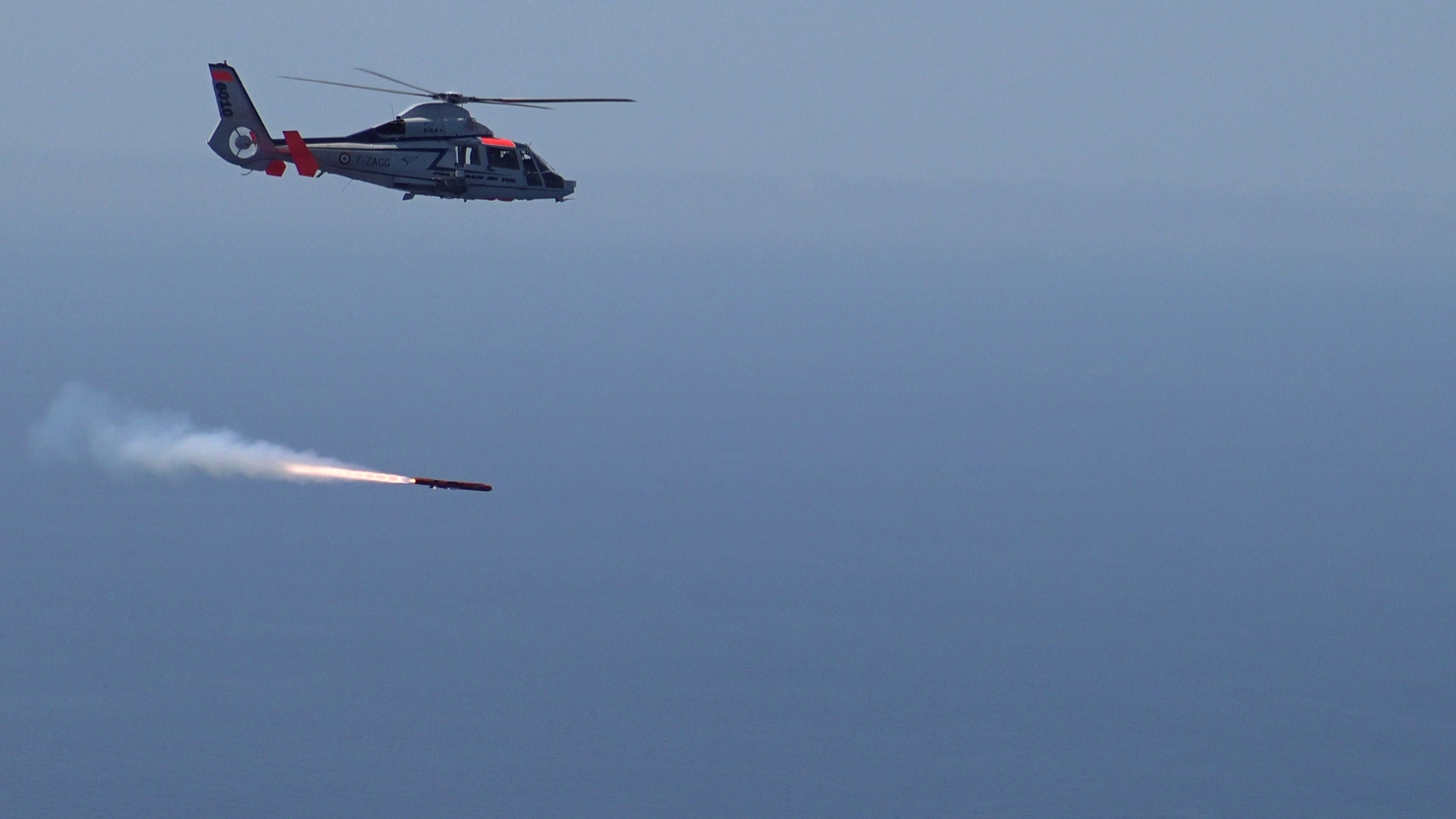MBDA's Sea Venom-ANL anti-ship missile has successfully completed its final development test firing.
MBDA reports that its Sea Venom-ANL anti-ship missile successfully completed its final development firing on 14th November. The missile was launched from a Direction Générale de l’Armement (DGA) Dauphin test helicopter operated by the French defence procurement agency, DGA, at the agency's Ile du Levant missile testing range.
The Anglo-French missile — known as the Anti-Navire Léger (ANL, Light Anti-ship Missile) in France — is now cleared to start qualification trials in 2019.
This latest trial, following a successful test in April, highlighted Sea Venom-ANL’s lock on before launch (LOBL) capabilities, with images from the missile’s infrared seeker being used by the operator to designate the target prior to launch, demonstrating the "man in the loop" function.
Sea Venom-ANL is capable of being launched from a wide range of platforms, and will be used on the UK Royal Navy’s AW159 Wildcat and French Navy's future HIL (Hélicoptère Interarmées Léger) light joint helicopters. The 120kg sea-skimming missile is designed to enable navies to deal with a range of threats including fast moving patrol boats, corvettes and coastal targets.
The missile is capable of being fired in both lock on before launch (LOBL) and lock on after launch (LOAL) modes, with a two-way datalink and imaging seeker giving the operator the ability to monitor the engagement, perform aim point refinement, select a new target, or abort the mission if necessary.
The missile is being developed under a joint programme launched at the 2010 Lancaster House Summit. The programme is the first to take full advantage of consolidated centres of excellence created within the Anglo-French missile industry under the ‘One Complex Weapons’ initiative.

